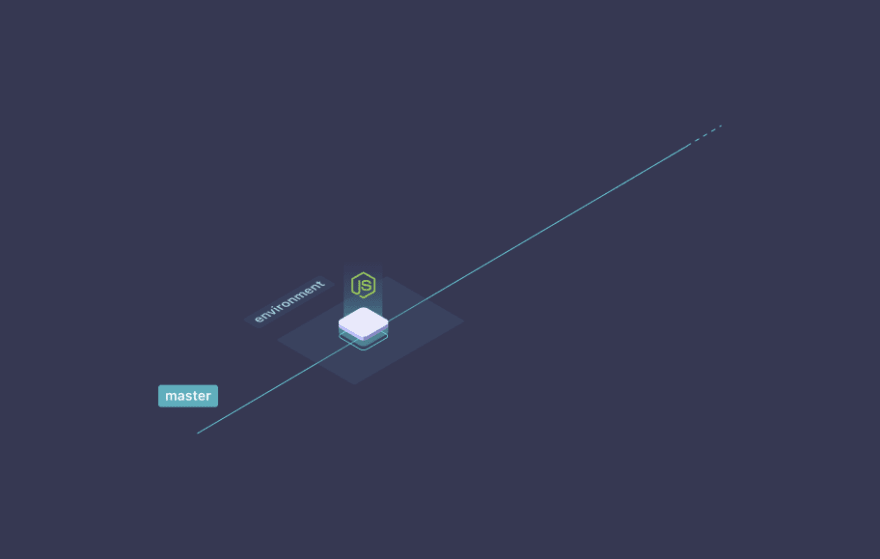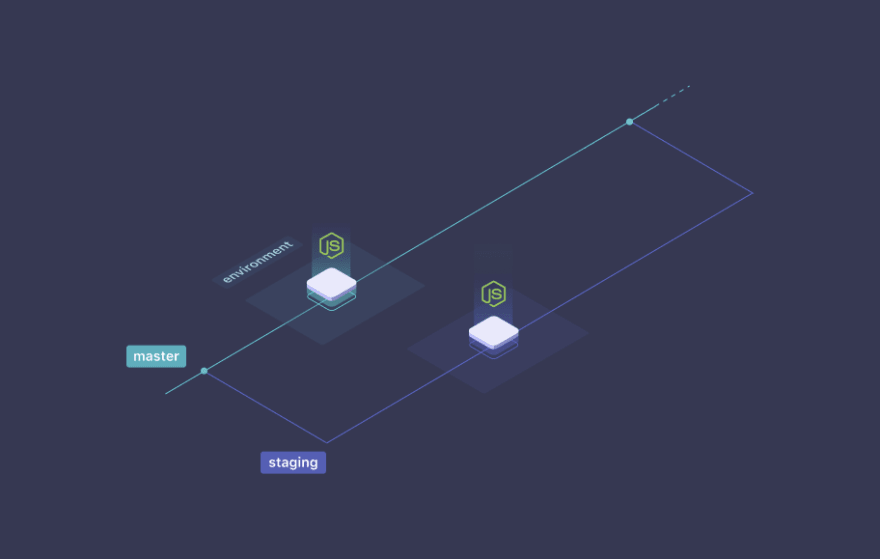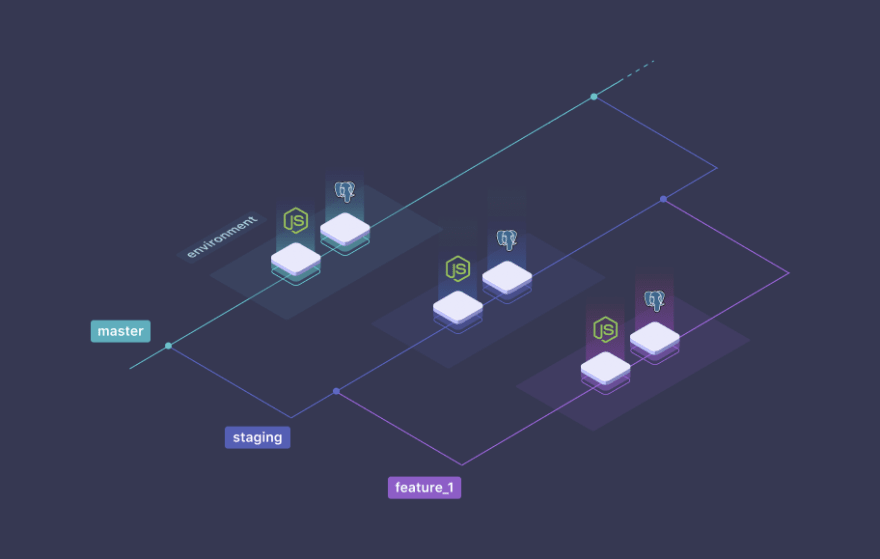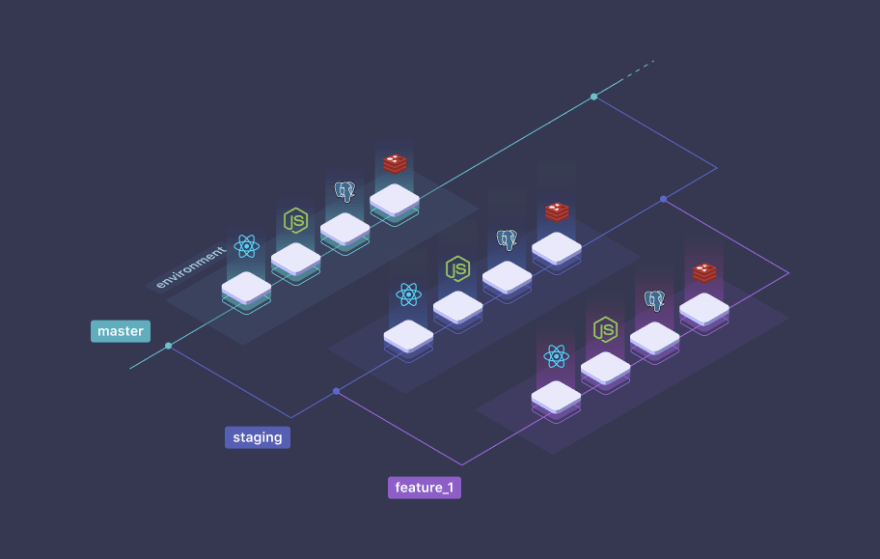All developers are not equal, some know how to deploy their applications, others don’t. But now it’s over! With Qovery, all developers can deploy their application in the Cloud in just a few seconds.
Qovery integrates seamlessly with Github and requires no effort from the developer.
We know how it can be painful for developers to deploy applications, manage staging/development/features environments, synchronize databases and all system stuff - even in the Cloud.
Developers should spend time doing what they love - developing applications, instead of wasting time on configuring databases, CDN, cache, network... That's why we decided to create Qovery. The first Container as a Service platform that allows any developer (junior, senior, backend, frontend...) to deploy applications in just a few minutes.
Requirements
- Qovery CLI
- Your code hosted on Github
Deploying application
Qovery is fully integrated into Github. Basically, you just need to have a .qovery.yml and a Dockerfile at the root of your project. Once it is done, commit and push your code. You’re done!
Generate the .qovery.yml file
cd simple-example-node
# checkout this sample project
# https://github.com/Qovery/simple-example-node
qovery init
cat .qovery.yml
application:
name: simple-example-node
project: simple-example-node
cloud_region: aws/eu-west-3
publicly_accessible: true
routers:
- name: main
routes:
- application_name: simple-example-node
paths:
- /*
Add your Dockerfile to the root folder of your project (here is a Dockerfile for my NodeJS project)
FROM node:13-alpine
RUN mkdir -p /usr/src/app
WORKDIR /usr/src/app
COPY . .
RUN npm install
EXPOSE 3000
CMD node ./bin/www
Commit and push your code
git add .qovery.yml Dockerfile
git commit -m "Add .qovery.yml and Dockerfile"
git push -u origin master
Congratulations, you have deployed your application.
qovery status --watch
Update application
You just have modified your app and you want to deploy it? Well, it’s straightforward, just commit, push and that’s it!
git commit -m "my updated code"
git push -u origin master
Application rollback
Oh! you miss something and you need to rollback to a previous version of your application? No worries, it's as simple as one command
qovery deploy list
branch date commit id deployed
master 5 hours ago 2cad27c442e8022677e91a2ad3eb585adc18126a ✓
master 5 hours ago 418502a29706fae3fbec94df165cd0f025803ae7 𐄂
master 21 hours ago 798303330c3789a7a5712350a4b04fa588705157 𐄂
master 22 hours ago 503e1d942a3dc12093c485bd518d3b3f8803f76b 𐄂
master one day ago c7ef8bdc8074ae18bbd42484e366d956ac3b0c72 𐄂
master one day ago 1eb5a515b41b1bce7dfa30bfdc698b7a8a2a9e94 𐄂
master 2 days ago d397cbe03be192e54a7233fd71e64728881430d4 𐄂
master 2 days ago 2e71d7175a1f71bdec7ba29b2f6cb5143d199285 𐄂
master 2 days ago a219b603118c1c9cf065af8f2e8cf88506248de2 𐄂
qovery deploy 418502a29706fae3fbec94df165cd0f025803ae7
deployment in progress...
hint: type "qovery status --watch" to track the progression of deployment
Staging branch
Sometimes you want to validate your code in a staging environment before putting it in production. That’s why we created the concept of “Environment”. Which is having isolated applications and services (databases, brokers, storage) for each branch. There is no risk to impact the production if something bad happens.
Having a staging environment is as easy as creating a new branch with the name “staging”
git checkout -b staging
git push -u origin staging
That’s it!
And obviously, you can track the status of your deployment in real time
qovery status --watch
Feature branch
Same as for the staging branch above, every branch that you create is per default an isolated environment. So just create your branch, and push your changes, a new isolated environment is live in a couple of seconds.
git checkout -b feat_x
git push -u origin feat_x
# watch status of the feat_x deployment
qovery status --watch
Database natively supported
Do you need a database? We support the most popular SQL (PostgreSQL, MySQL) and NoSQL (MongoDB, Elasticsearch, Redis, Memcached, Cassandra) databases. Thanks to AWS managed services for the reliability and the performances.
Supporting a database is as simple as updating the .qovery.yml
application:
name: simple-example-node
project: simple-example-node
cloud_region: aws/eu-west-3
publicly_accessible: true
# add this section
databases:
- type: postgresql
version: "11.5"
name: my-postgresql-db
# end
routers:
- name: main
routes:
- application_name: simple-example-node
paths:
- /*
To deploy the PostgreSQL database you need to commit and push the .qovery.yml
git add .qovery.yml
git commit -m "add postgresql database to the project"
git push -u origin master
What is going on if I create a new branch with a database?
The database and all its data are cloned as well.
Note: If you don’t want to clone the data, it is as well possible.
Multiple applications and databases in one project
Let’s imagine that you need to have a backend API and a frontend website that work together. These 2 apps belong to the same project. Meaning, they need to communicate with each other within the same environment. Obviously, this is natively possible with Qovery.
For instance:
Repository A is a backend API made with NodeJS -> connected to a PostgreSQL database and Redis key/value store
Repository B is a frontend made in React -> connected to the backend API
Project A .qovery.yml file
application:
name: backend-api
project: my-multi-apps-project
cloud_region: aws/eu-west-3
publicly_accessible: true
databases:
- type: postgresql
version: "11.5"
name: my-postgresql-db
- type: redis
version: "5.0"
name: my-redis
routers:
- name: api
routes:
- application_name: backend-api
paths:
- /*
Project B .qovery.yml file
application:
name: frontend
project: my-multi-apps-project
cloud_region: aws/eu-west-3
publicly_accessible: true
routers:
- name: web
routes:
- application_name: frontend
paths:
- /*
You can note that they have the same “project” name. This is the parameter to make them belong to the same project.
On the other side, routers have different properties to properly route the traffic according to their application.
Conclusion
Qovery is the swiss army knife of all developers who want to deploy their application while staying focused on their code. No need to learn how to use AWS to deploy on it. Our goal is to provide the best developer experience ever.













Top comments (0)